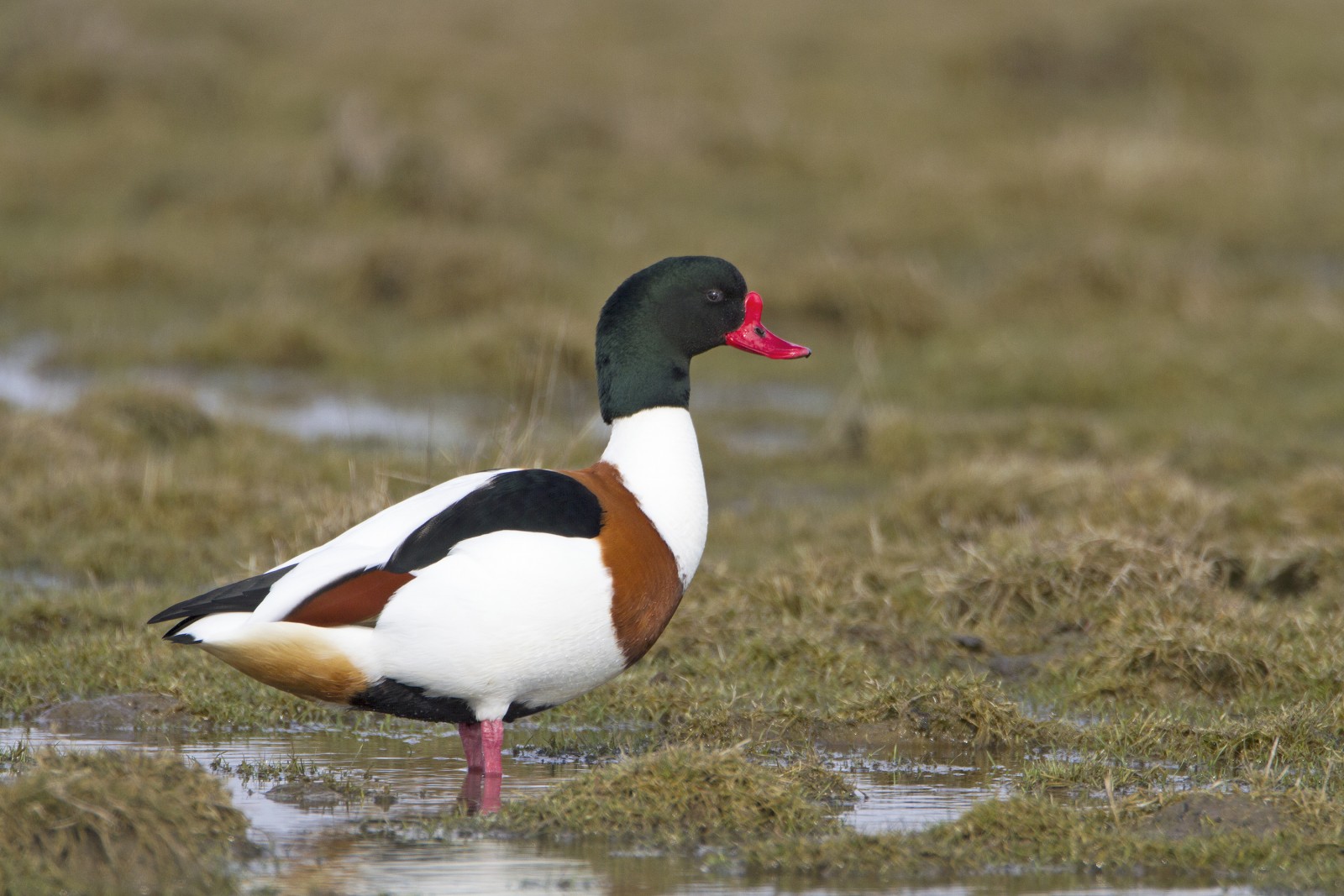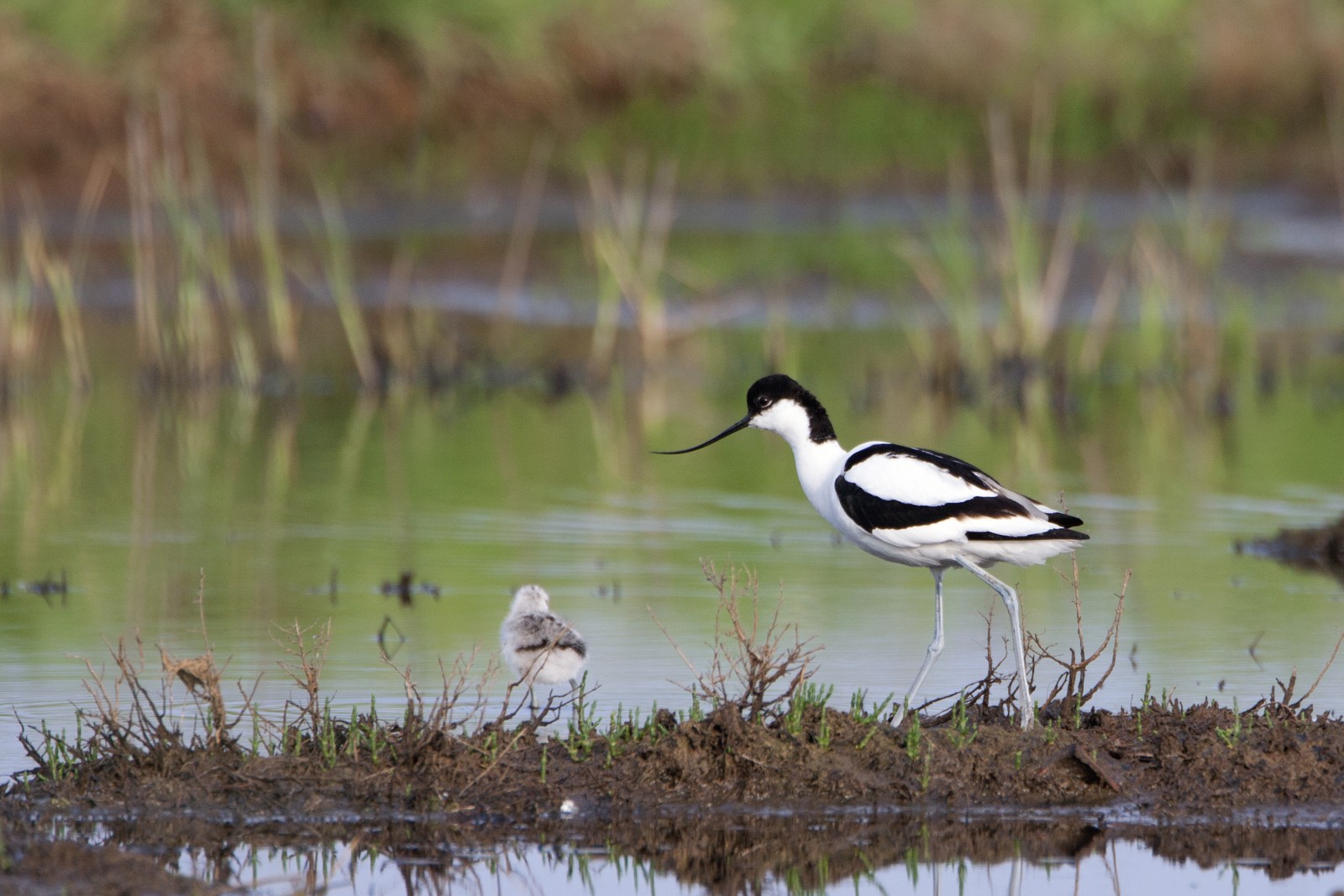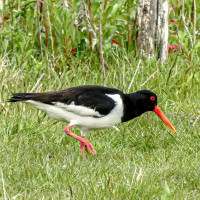Description
Harboør Tange is the southernmost of the two bars forming the boundary between the Limfjord to the east and the North Sea to the west. At the northernmost end of the bar is the harbour town of Thyborøn. The area is raised sea bed and therefore flat and low-lying. Only the dykes, the tall chimneys of the Cheminova chemical plant, the buildings on Rønland and the giant wind turbines around Rønland rise up in the landscape. The bar is dominated by two large and several small shallow brackish lagoons. Around the lagoons and on both sides of the road on the western side of the lagoons there are coastal meadows with grazing cattle. Between the two large lagoons are the meadows of Knopper Enge. East of the lagoons are areas overgrown by reeds and bushes, interspersed with small wet meadow areas which have been opened up by grazing cattle. At the south-eastern end of the bar is a shooting range. Two bird islets were constructed in the southern lagoon as safe breeding sites. There is a large islet in the south-western end and a smaller one in the north-eastern end. A larger islet was constructed in the southern end of the northern lagoon.
Birds that breed in the area are Eurasian Oystercatcher, Little Ringed Plover, Northern Lapwing, Dunlin, Black-tailed Godwit and many species of duck, swan, geese and grebe. The artificial islets have worked like a magnet on Black-headed Gull, Avocet, Arctic Tern, Common Tern and Sandwich Tern. Passerines include many Sedge Warbler, and Common Rosefinch is now and then heard singing in the scrub. The area also attracts a great many migrating waterbirds in spring. These are particularly attracted by the lagoons, the flooded meadows and the shallow waters in Nissum Bredning. Pink-footed Goose and pale-bellied Brent Goose arrive in March/April – possibly even in January if the winter is a mild one. In March Common Teal, Northern Pintail and Eurasian Wigeon arrive, and in April Garganey, Northern Shoveler and a few Gadwall. Harboør Tange is one of the few places in western Denmark where Greater Scaup can be seen in spring. Migrating waders that stop over in the area include European Golden Plover, Curlew Sandpiper, Common Snipe, Bar-tailed Godwit and Eurasian Curlew. Wader migration tops at the beginning of May, when the colourful Ruff are very noticeable. However, autumn is the most impressive time of the year both with regard to the variety of species and the numbers of birds, depending on the weather, the water levels and forage availability. The lagoons and meadows are dominated by ducks, swans and geese. In August, many Common Teal can be seen, and later on Eurasian Wigeon, Whooper Swan and Bewick's Swan appear. During the winter months, many Common Goldeneye can be seen.
Details
Access
Route 181 along the west coast or route 513 leading west out of the Limfjord town of Lemvig both lead to Harboøre Tange. There are various places one can stop and bird-watch. It is permitted to drive on the gravel roads in the area. All access to the coastal meadows is prohibited from 15th April to 15th July.
1. One can park on the railway embankment next to the southern lagoon on route 181 between Harboør and Thyborøn. From here there is a view over the lagoon to the west and Nissum Bredning, coastal meadows and the remains of Rønland Sandø to the east.
2. One can park at Rønland Station and walk about 500m south on a farm track on the west side of the railway line to reach a low bird hide with a view across the Knopper Enge and the north-eastern corner of the southern lagoon.
3. Just north of Cheminova chemical plant there are car-parks/lay-bys on both sides of the road. From the railway embankment there is a view of the northern lagoon and the bird islet. A walk along the west side of the railway line can offer spottings of passerines in the scrub.
4. By driving west along Rønlandvej one has a view across Knopper Enge on both sides of the road. It is best to stay in the car so as not to disturb the birds. One can park the car at the end of Rønlandvej, in front of the dunes.
5. One can walk or cycle on the gravel roads and there is a good route called "Vestkyststien" (West Coast Trail) between Thyborøn and Harboør along the western side of the lagoons, on which one can walk or cycle.
6. Thyborøn harbour is also worth a visit, especially the northern pier and the area around the 999 fish oil factory, where many gulls flock on the roofs.
Terrain and Habitat
Wetland , Lake , Mud flats , Sea , ReedbedsConditions
Flat , Open landscapeCircular trail
YesIs a telescope useful?
YesGood birding season
All year roundBest time to visit
Spring migration , Autumn migrationRoute
Paved road , Unpaved roadDifficulty walking trail
EasyAccessible by
Foot , Bicycle , CarBirdwatching hide / platform
NoExtra info
Note: the area is protected but there is intensive hunting here from September to January, except on the lagoons.




